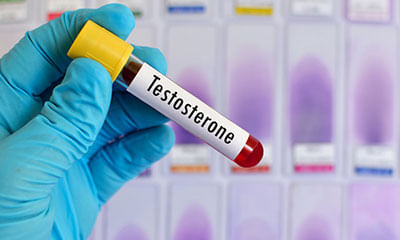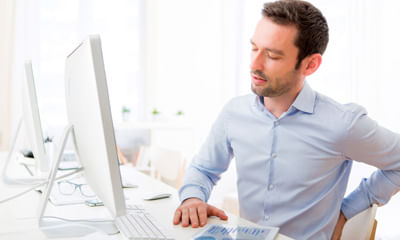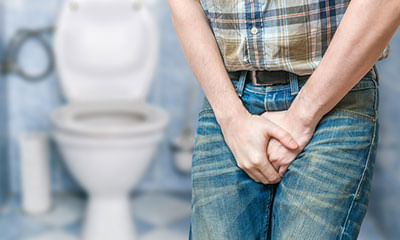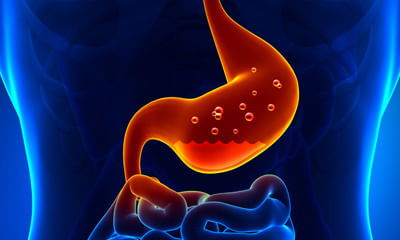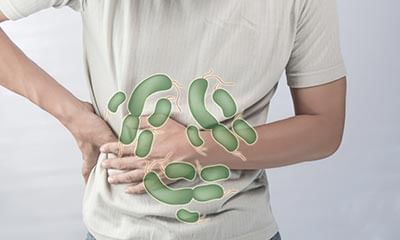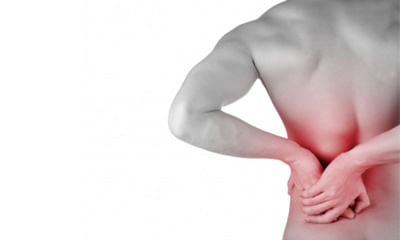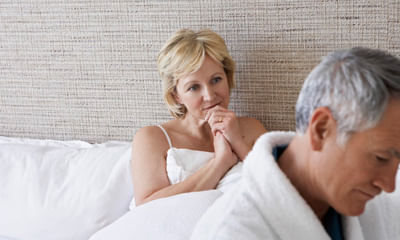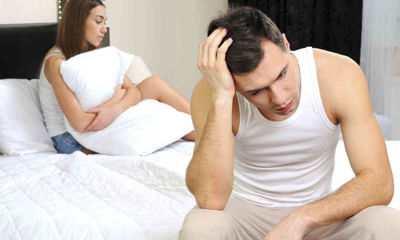Pain In Left Abdomen Area Male
Yesterday while I was sitting I felt a sudden sharp pain in my left testicle and since then every time I sit, stand or m ...
Ask Free Question
However, I can provide you with some general information about possible causes: testicular torsion: this is a serious condition that occurs when the testicle rotates, cutting off its blood supply. It often causes sudden and severe pain in the testicle and requires immediate medical attention. Epididymitis: this is the inflammation of the epididymis, a coiled tube located at the back of the testicle. It can be caused by infections or other factors, and it may result in pain and swelling in the scrotum. Varicocele: this is the enlargement of veins within the scrotum, similar to varicose veins. It can cause discomfort or pain, especially when standing or exerting pressure on the area. Inguinal hernia: this occurs when a part of the intestine or other tissue protrudes through a weak spot in the abdominal muscles, often causing pain or discomfort in the groin area. Muscle strain or injury: sometimes, pain in the testicle can be caused by a strain or injury to the muscles in the area, which can be exacerbated by movement or touch.
I've got a pain in my left side above my hip and below my ribs when it hits I can't breathe I can't walk I can't find a ...
Ask Free Question
Kidney pain vs. Back pain because your kidneys are located toward your back and= underneath your ribcage, it may be hard to tell if the pain you’re experiencing in that area is coming from your back or your kidney. The symptoms you’re having can help you figure out which is the source of the pain. The location, type, and severity of the pain are some of the things that will be different depending on whether the pain is from a problem in your kidneys or your back. How to identify kidney painkidney pain is most often caused by a kidney infection or a stone in the tubes coming out of your kidney. If the pain is coming from your kidney, it will have these features: where the pain is located kidney pain is felt in your flank, which is the area on either side of your spine between the bottom of your ribcage and your hips. It usually occurs in one side of your body, but it can occur in both sides. Type of pain kidney pain is usually sharp if you have a kidney stone and a dull ache if you have an infection. Most often it will be constant. It won’t get worse with movement or go away by itself without treatment. If you’re passing a kidney stone, the pain may fluctuate as the stone moves. Radiation of the pain sometimes the pain spreads (radiates) to your inner thigh or lower abdomen. Severity of the pain kidney pain is classified according to how bad it is — severe or mild. A kidney stone usually causes severe pain, and the pain from an infection is usually mild. Things that make it better or worse typically, nothing makes the pain better until the problem is corrected, such as by passing the stone. Unlike back pain, it usually won’t change with movement. Accompanying symptoms if you have a kidney infection or a kidney stone, you may also experience: •fever and chills •nausea and vomiting •cloudy or dark urine •an urgent need to urinate •pain when you urinate •a recent infection in your bladder •blood in your urine (this can happen with an infection or kidney stones) •small kidney stones that look like gravel in your urine how to identify back pain back pain is more common than kidney pain and is usually caused by a problem in the muscles, bones, or nerves in your back. Has the following features: where the pain is located back pain can occur anywhere on your back, but it’s most commonly located in your lower back or one of your buttocks. Type of pain muscle pain feels like a dull ache. If a nerve has been injured or irritated, the pain is a sharp burning sensation that may travel down your buttock to your lower leg or even your foot. Muscle pain may affect one or both sides, but nerve pain usually only affects one side. Radiation of the pain nerve pain may spread to your lower leg. Pain from a muscle usually stays in the back. Severity of the pain back pain is described as acute or chronic based on how long you’ve had it. Acute pain lasts days to weeks, subacute pain lasts six weeks to three months, and chronic pain lasts longer than three months. Things that make it better or worse back pain may get worse with movement or if you sit or stand for a long time. It may get better if you switch positions or walk around. Accompanying symptoms other symptoms you may experience with back pain include: •the painful spot looking swollen and feeling tender to the touch •a muscle spasm in the painful area •numbness or weakness in one or both of your legs (if the pain is due to a nerve issue) if you find you have back pain and can’t hold your urine or bowel movements, something is pressing on your spinal nerves, and you should be evaluated immediately. This condition, called caudaequina syndrome, can cause severe long-term damage to your spinal nerves if not treated right away. 6 imbalances that cause pain—and how to fix them "pain is a medical condition and a medical issue, says brett jones, owner of applied strength in pittsburgh who is certified for the functional movement screen, a system of tests and cor rective exercise strategies. "it's a warning sign. The pain is there to tell you something's wrong.
Hello doctor, I am 19 years old male. 1 year ago, I did some intense exercises, due to which I suffer from lower back pa ...
Ask Free Question
Back pain can affect people of any age, for different reasonsas people get older, the chance of developing lower back pain increases, due to factors such as previous occupation and degenerative disk disease. Lower back pain may be linked to the bony lumbar spine, discs between the vertebrae, ligaments around the spine and discs, spinal cord and nerves, lower back muscles, abdominal and pelvic internal organs, and the skin around the lumbar area. •acute pain starts suddenly and lasts for up to 6 weeks. •chronic or long-term pain develops over a longer period, lasts for over 3 months, and causes ongoing problems. Home advise: •resting from strenuous activity can help, but moving around will ease stiffness, reduce pain, and prevent muscles from weakening. •applying heat, ice, ultrasound, and electrical stimulation — as well as some muscle-release techniques to the back muscles and soft tissues — may help alleviate pain. •as the pain improves, the physical therapist may introduce some flexibility and strength exercises for the back and abdominal muscles. Techniques for improving posture may also help. •the patient will be encouraged to practice the techniques regularly, even after the pain has gone, to prevent back pain recurrence. Regular exercise helps build strength and control body weight. Guided, low-impact aerobic activities can boost heart health without straining or jerking the back. Before starting any exercise program, talk to a health care professional. There are two main types of exercise that people can do to reduce the risk of back pain: •core-strengthening exercises work the abdominal and back muscles, helping to strengthen muscles that protect the back. •flexibility training aims at improving core flexibility, including the spine, hips, and upper legs. We suggest you to wear lumbosacral corset (belt) which is available at our clinic. If you want you can buy from us, if you are far away from chennai we can send you by courier. The reason why we are conveying you to buy from us is we can demonstrate over the videocall (using whatsapp) and also we can monitor you throughout when to wear it and how long to wear it. And also if you find any difficulty wearing the brace you can also revert back to us for few more suggestions and we can propose you good solution how to go about it. Uses of lumbosacral corset (belt) a lumbosacral corset adds pressure to the intra-abdominal area. This adds stability to the spine. It is prescribed to people suffering from moderate to severe pain. Other benefits of using a lumbar spine belt are: 1.helps in a certain degree of immobilization of facet joints. 2.reduces pain to allow continuation of normal activities. 3.speeds up the healing process. 4.the pressure exerted by a lumbar spine belt helps in stretching the erector spine muscles. 5.this belt can also be used to support the lower back while exercising. Helps prevent rolling provides stability to lumbar and sacral regions of the back can be used when performing actions like lifting and handling heavy items can also be used when playing sports restricts back movement to aid treatment of back problems do’s and don’ts sitting do: • sit as little as possible and then only for short periods. • place a supportive towel roll at the belt line of the back especially when sitting in a car. • when getting up from sitting, keep the normal curves in your back. Move to the front of the seat and stand up by straightening your legs. Avoid bending forward at the waist. • try to keep the normal curves in your back at all times. Don’t: • do not sit on a low soft couch with a deep seat. It will force you to sit with your hips lower than your knees and will round your back. You will loose the normal curve in your back. • do not place your legs straight out in front of you while sitting (e.g. Sitting in the bath tub). Standing do: • if you must stand for a long period of time, keep one leg up on a foot stool. • adapt work heights. Don’t: • avoid half bent positions. Lifting avoid lifting if you can. Do: • use the correct lifting technique. Keep your back straight when lifting. Never stoop or bend forward. Stand close to the load, have a firm footing and wide stance. Kneel on one knee, keeping the back straight. Have a secure grip on the load and lift by straightening your knees. Do a steady lift. Shift your feet to turn and do not twist your back. Don’t: • do not jerk when you lift. • do not bend over the object you are lifting. Lying do: • sleep on a good firm surface. • if your bed sags, use slats or plywood supports between the mattress and base to firm it. You also can place the mattress on the floor, a simple but temporary solution. • you may be more comfortable at night when you use a pillow for support. Don’t: • do not sleep on your stomach unless advised to do so by your doctor or physical therapist. Bending forward do: • keep the natural curves of your back when doing these and other activities: making a bed, vacuuming, sweeping or mopping the floor, weeding the garden or raking leaves. Coughing and sneezing do: • bend backwards to increase the curve of your back while you cough or sneeze. Driving a car do: • drive the car as little as possible. It is better to be a passenger than to drive yourself. • move the seat forward to the steering wheel. Your seat must be close enough to the wheel to keep the natural curves of your back. If your hips are lower than your knees in this position, raise yourself by sitting on a pillow. Exercises for low back pain 1. Bridges •lie on the ground and bend the knees, placing the feet flat on the floor hip-width apart. •press the feet into the floor, keeping the arms by the sides. •raise the buttocks off the ground until the body forms a straight line from the shoulders to the knees. •squeeze the buttocks with the shoulders remaining on the floor. •lower the buttocks to the ground and rest for a few seconds. •repeat 15 times and then rest for 1 minute. •do 3 sets of 15 repetitions. 2.lying lateral leg lifts •lie on one side with the legs together. •keep the lower leg slightly bent. •draw the bellybutton into the spine to engage the core muscles. •raise the top leg about 18 inches, keeping it straight and extended. •hold the position for 2 seconds. •repeat 10 times. •turn onto the other side of the body and repeat, lifting the other leg. •perform 3 sets on each side. 3.supermans •lie face down on the ground and stretch both arms out in front of the body, keeping the legs stretched out and flat on the ground. •raise both the hands and feet, aiming to create a gap of about 6 inches between them and the floor. •try to pull in the bellybutton, lifting it off the floor to engage the core muscles. •keep the head straight and look at the floor to avoid neck injury. •stretch the hands and feet outward as far as possible. •hold the position for 2 seconds. •return to the starting position. •repeat 10 times. 4.partial curls •lie back on the floor and bend the knees, keeping the feet flat and hip-width apart. •cross the hands over the chest. •breathe in deeply. •on the breath out, engage the abdominal muscles by pulling in the stomach. •gently raise the head and shoulders 2 inches off the ground while keeping the neck in line with the spine. •hold for 5 seconds then return to the starting position. •repeat the exercise 10 times. •perform 3 sets. 5.knee-to-chest stretches •lie on the back on the floor. •bend the knees, keeping both feet flat on the floor. •use both hands to pull one knee in toward the chest. •hold the knee against the chest for 5 seconds, keeping the abdominals tight and pressing the spine into the floor. •return to the starting position. •repeat with the opposite leg. •repeat with each leg 2–3 times twice a day. 6.lower back rotational stretches •lie back on the floor with bent knees and feet flat on the ground. •keeping the shoulders firmly on the floor, gently roll both bent knees over to one side. •hold the position for 5–10 seconds. •return to the starting position. •gently roll the bent knees over to the opposite side, hold, and then return to the starting position. •repeat 2–3 times on each side twice a day. 7.seated lower back rotational stretches •sit on a stool or chair without arms, keeping the feet flat on the floor. •twist at the core to the right, keeping the hips square and the spine tall. •position the hands behind the head or place the left hand on the right knee to support the stretch. •hold the position for 10 seconds. •repeat the exercise on the left-hand side. •repeat on each side 3–5 times twice a day. Posture when standing: make sure you have a neutral pelvic position. Stand upright, head facing forward, back straight, and balance your weight evenly on both feet. Keep your legs straight and your head in line with your spine. Posture when sitting: a good seat for working should have good back support, arm rests and a swivel base. When sitting, try to keep your knees and hips level and keep your feet flat on the floor, or use a footstool. You should ideally be able to sit upright with support in the small of your back. If you are using a keyboard, make sure your elbows are at right-angles and that your forearms are horizontal. Shoes: flat shoes place less of a strain on the back. Driving: it is important to have proper support for your back. Make sure the wing mirrors are properly positioned so you do not need to twist. The pedals should be squarely in front of your feet. If you are on a long journey, have plenty of breaks. Get angle. Out of the car and walk around. Bed: you should have a mattress that keeps your spine straight, while at the same time supporting the weight of your shoulders and buttocks. Use a pillow, but not one that forces your neck into a steep.
I am a 19-year-old male and am having trouble starting stream of urine and also have premature ejaculation issues. I exp ...
Ask Free Question
One thing I want to knw while masturbating do you experience premature ejeculation. And one more thing how do you differentiate normal ejaculation from premature ejaculation mean while just for precaution get your serum psa level done. Specially if you feel heaviness / pain in your perineal area. If you want than you can take an appointment. I guess I can help. Take care and have a nice day.
I am 23 year old male, i've been 3 weeks now with dull bloating pain in my right abdomen side. It all started with wakin ...
Ask Free Question
What r other symptoms that you r experiencing? By doing what like walking, exertion, eating or empty stomach- it increases or decreases in intensity. For how much time the pain remains? Is there stiffness also? How is your appetite? R you constipated? Any problem in urine? I need to know more to be able to make diagnosis. In the meanwhile follow this 1. Don't take tea empty stomach. Eat something like a banana (if you are not diabetic) or any seasonal fruit or soaked almonds and a glass of water first thing in the morning (within 10 mins of waking up). No only biscuits or rusk will not do. 2. Don't overeat 3. Take your breakfast every day. Don't skip it. U should eat whatever your mother or grandparent eat in bfast. I mean to say whatever is your traditional food. If punjabi eat paratha, if belongs to south then take idli/ dosa etc. 4. Have light meals every 2 hours (in addition to your breakfast, lunch n dinner) e.g. Nariyal paani, chaach, a handful of dry fruits, a handful of peanuts, any fresh n seasonal fruit, a cup of curd/milk etc 5. Finish your dinner at least 2 hours before going to sleep. 6. Maintain active life style7. Avoid fast foods, spicy n fried foods, carbonated beverages 8. Take a lot of green vegetables n fruit. 9. Drink lot of water.10. Everyday preferably sleep on same time exercise in the form of yoga, cycling, swimming, gym etc. Till lockdown do suryanamaskar every day. for this homeopathy offers good results. Consult online with details.
I am a 28 year old male and I recently had an ultrasound (yesterday) as for the past 5 months i've had abdominal and bac ...
Ask Free Question
What r other symptoms that you r experiencing? By doing what like walking, exertion, eating or empty stomach- it increases or decreases in intensity. For how much time the pain remains? Is there stiffness also? How is your appetite? R you constipated? Any problem in urine? I need to know more to be able to make diagnosis. In the meanwhile follow this 1. Don't take tea empty stomach. Eat something like a banana (if you are not diabetic) or any seasonal fruit or soaked almonds and a glass of water first thing in the morning (within 10 mins of waking up). No only biscuits or rusk will not do. 2. Don't overeat 3. Take your breakfast every day. Don't skip it. U should eat whatever your mother or grandparent eat in bfast. I mean to say whatever is your traditional food. If punjabi eat paratha, if belongs to south then take idli/ dosa etc. 4. Have light meals every 2 hours (in addition to your breakfast, lunch n dinner) e.g. Nariyal paani, chaach, a handful of dry fruits, a handful of peanuts, any fresh n seasonal fruit, a cup of curd/milk etc 5. Finish your dinner at least 2 hours before going to sleep. 6. Maintain active life style7. Avoid fast foods, spicy n fried foods, carbonated beverages 8. Take a lot of green vegetables n fruit. 9. Drink lot of water.10. Everyday preferably sleep on same time exercise in the form of yoga, cycling, swimming, gym etc. for this homeopathy offers good results. Consult online with details.
I am 25 years old male. 2 months back I was feeling dribbling or urine and discomfort in inner thighs. Doctor gave me le ...
Ask Free Question
Up load all test reports for proper assessment. Get urine culture and sensitivity test .do 1.Pass urine whenever you feel a desire, empty bladder completely. 3.Take lots of water so as to have clear urine 4.Do not use any spray, scented bath products 6.Clean genitals before sex and pass urine after sex to flush out any bacteria 7.Keep genital area dry- wear cotton, loose under garments, avoid tight clothes like jeans medicine can not be advised for open question, for medicine contact on private consultation.
For two days now i've been getting discomfort and mild pain in my lower back in the left kidney area when walking/moving ...
Ask Free Question
What is exact location of pain? Also which lumbar disc herniation. Since when r you having this?What r other symptoms that you r experiencing? By doing what like walking, exertion, eating or empty stomach- it increases or decreases in intensity. For how much time it remains? Is there stiffness also? How is your appetite?Any problem in urine?I need details. Below are exercises that strengthen the lower back and help manage lower back pain: 1. Bridges—lie on the ground and bend the knees, placing the feet flat on the floor hip-width apart. Press the feet into the floor, keeping the arms by the sides. Raise the buttocks off the ground until the body forms a straight line from the shoulders to the knees. Squeeze the buttocks with the shoulders remaining on the floor. Lower the buttocks to the ground and rest for a few seconds.Repeat 15 times and then rest for 1 minute.Do 3 sets of 15 repetitions.2. Knee-to-chest stretches— lie on the back on the floor. Bend the knees, keeping both feet flat on the floor. Use both hands to pull one knee in toward the chest. Hold the knee against the chest for 5 seconds, keeping the abdominals tight and pressing the spine into the floor. Return to the starting position.Repeat with the opposite leg.Repeat with each leg 2–3 times twice a day. 3. Lower back rotational stretches—lie back on the floor with bent knees and feet flat on the ground. Keeping the shoulders firmly on the floor, gently roll both bent knees over to one side. Hold the position for 5–10 seconds. Return to the starting position. Gently roll the bent knees over to the opposite side, hold, and then return to the starting position. Repeat 2–3 times on each side twice a day. 4. Draw-in maneuvers— lie back on the floor with knees bent and feet flat, keeping the arms by the sides. Breathe in deeply. While breathing out, pull the bellybutton toward the spine, tightening the abdominal muscles and keeping the hips still. Hold the position for 5 seconds. Repeat 5 times. 5. Pelvic tilts— lie back on the floor with knees bent and feet flat, keeping the arms by the sides. Gently arch the lower back and push the stomach out. Hold for 5 seconds, then relax. Flatten the back and pull the bellybutton in toward the floor. Hold for 5 seconds, then relax. Increase the number of repetitions daily, building up to 30. 6. Lying lateral leg lifts— lie on one side with the legs together. Keep the lower leg slightly bent. Draw the bellybutton into the spine to engage the core muscles. Raise the top leg about 18 inches, keeping it straight and extended. Hold the position for 2 seconds. Repeat 10 times. Turn onto the other side of the body and repeat, lifting the other leg. Perform 3 sets on each side. 7. Cat stretches— get onto the hands and knees with the knees hip-width apart. Arch the back, pulling the bellybutton up toward the spine. Slowly relax the muscles and allow the abdomen to sag toward the floor. Return to the starting position. Repeat 3–5 times twice a day. 8. Supermans— lie face down on the ground and stretch both arms out in front of the body, keeping the legs stretched out and flat on the ground. Raise both the hands and feet, aiming to create a gap of about 6 inches between them and the floor. Try to pull in the bellybutton, lifting it off the floor to engage the core muscles. Keep the head straight and look at the floor to avoid neck injury. Stretch the hands and feet outward as far as possible. Hold the position for 2 seconds. Return to the starting position. Repeat 10 times. For this homeopathic treatment is very effective consult online with details.
I'm 19 years old male. My right testicle started paining 4 months ago. Then my left testicle also started paining. My lo ...
Ask Free Question
Hello- you might be suffering from varicocele. It can not be diagnosed be plain usg. You need to go for color doppler usg of scrotum. Consult to get a prescription for the test and to discuss the treatment option.
Suddenly I started feeling pain in my scrotum, after examining I saw swelling in my left testicle. And the pain have gro ...
Ask Free Question
Hello- The testicles are extremely sensitive organs. A minor strike to them can produce excruciating pain. More importantly, injuries can jeopardize the health and functionality of the testicles, possibly leading to male infertility. Therefore, testicle pain needs to be examined and treated immediately. Feel free to consult.

